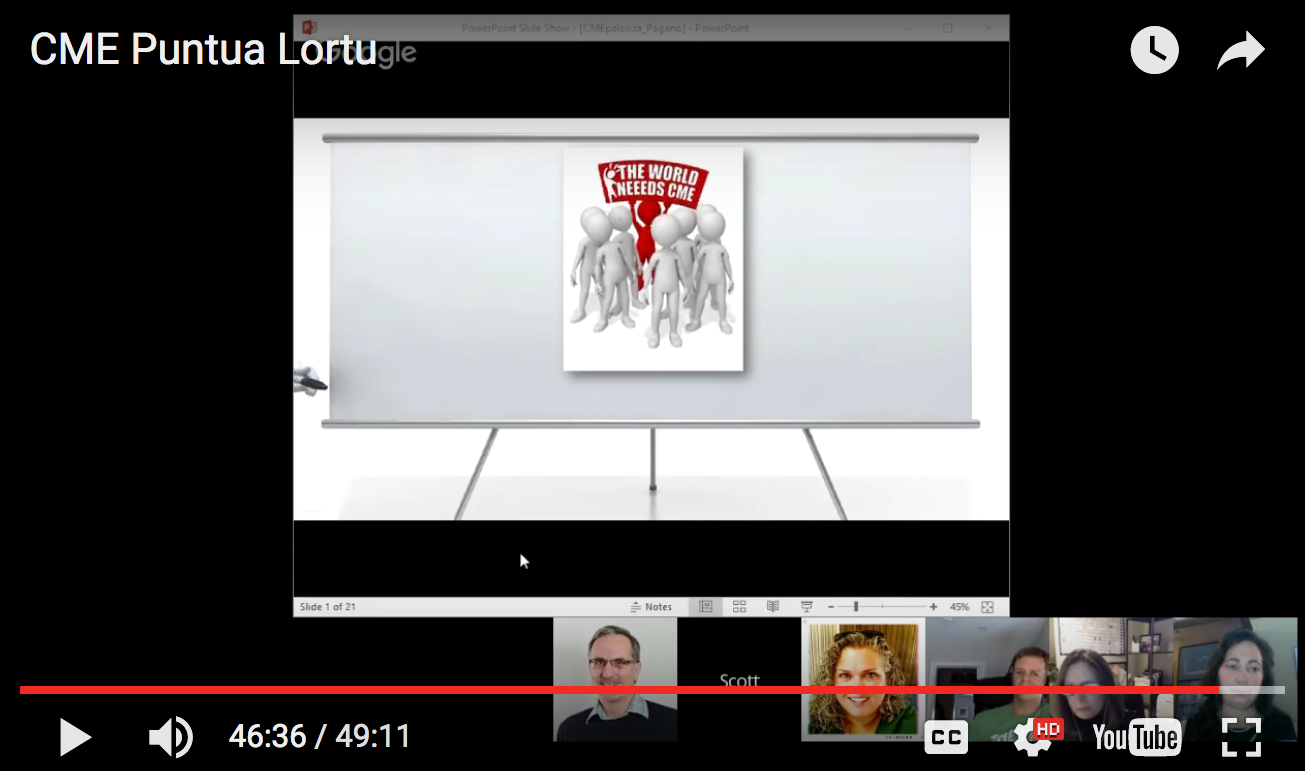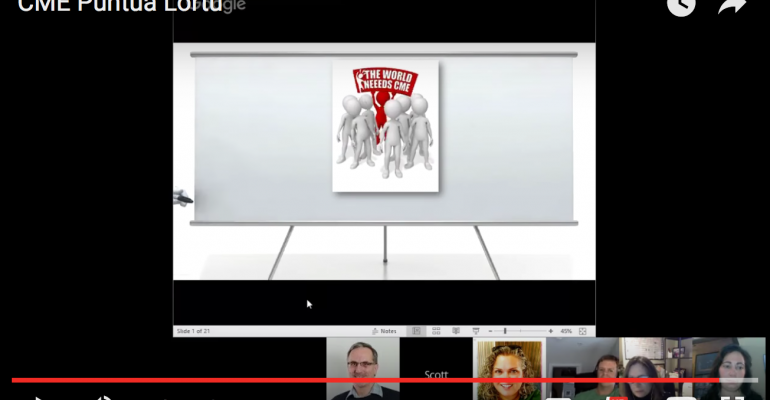 Cathy Pagano, president of CME Matters LLC, says she would probably be perfectly happy working in the tile department at Home Depot. And yet she chose—and continues to choose, every day—to be in the continuing medical education field, despite all the headaches and paperwork and rules and regulations it entails.
Cathy Pagano, president of CME Matters LLC, says she would probably be perfectly happy working in the tile department at Home Depot. And yet she chose—and continues to choose, every day—to be in the continuing medical education field, despite all the headaches and paperwork and rules and regulations it entails.
Why? As she said during a Puntua Lortu session—a format that is similar to Pecha Kucha, with 20 slides, 20 seconds per slide, over six minutes—at the 2016 Fall CME Palooza, “We’re not just making a living. We’re making a difference.”
She asked her faculty for some stories she could share during the free, one-day online educational program organized by Derek Warnick, a continuing healthcare education professional, and Scott Kober, MBA, CCMEP, principal at MedCaseWriter.
Here are a few she told to encapsulate exactly how big a difference CME can make in patients’ lives.
Case: Too Little, Too Late
A little kid comes into the emergency room with what appeared to be conjunctivitis for the third time. The previous two times, he was prescribed antibiotics and sent home. This time, his mom demanded that he be seen by an eye expert, who correctly diagnosed him with pan uveitis. Unfortunately, by the time he saw that expert, it was too late to save his left eye.
Time wasted in coming to the correct diagnosis can have catastrophic results. If that ER physician had participated in a CME activity on the topic of pan uveitis, that little boy might still have both of his eyes.
Case: The Accidental Needs Assessment
Pagano was on the phone with a lung cancer expert planning a new initiative. While they were talking, the expert got an email from a nurse practitioner who had serious questions about the treatment regimen her doc was prescribing for the patient, and rightly so. He wanted to get back to her immediately before any harm was done, but Pagano said she did ask him which hospital the NP was calling from so she could make a note of it, since obviously there was a need for more education on the topic there.
Case: When Your Mom Speaks, Listen
Then there’s the on-the-spot learning that drives home the importance of the work in front of your eyes. Pagano says that happened to one of her colleagues at an American Heart Association conference. He had developed a heart attack simulation pod that he brought to the convention. “One cardiologist left the pod very abruptly, pushing past our colleague who was interviewing everyone as they exited,”
she said.
“Turns out this cardiologist had been on the phone that day with his mother, who was complaining of the same symptoms he had just experienced in the simulation. As he ran past our colleague, he shouted ‘I have to get to my mother. I think she’s having a heart attack and I missed it.’”
It’s easy to get caught up in all the learning styles and innovative educational designs and outcomes reporting, and to gloat over your percentage improvement numbers, but Pagano urged CME providers to remember the stories behind those numbers. “These are real patients, not just statistics,” she said.
And to those who say CME is just a boondoggle way for industry to curry favor with docs to get them to prescribe their drugs—those who want to eliminate funding for CME—Pagano said, “I would ask those naysayers, ‘Do you feel your own healthcare professionals are up to date with everything they need to know before they treat you?’” As these cases—and most CME providers have heard similar ones—make clear, CME is one important way to protect patients from medical mistakes.





